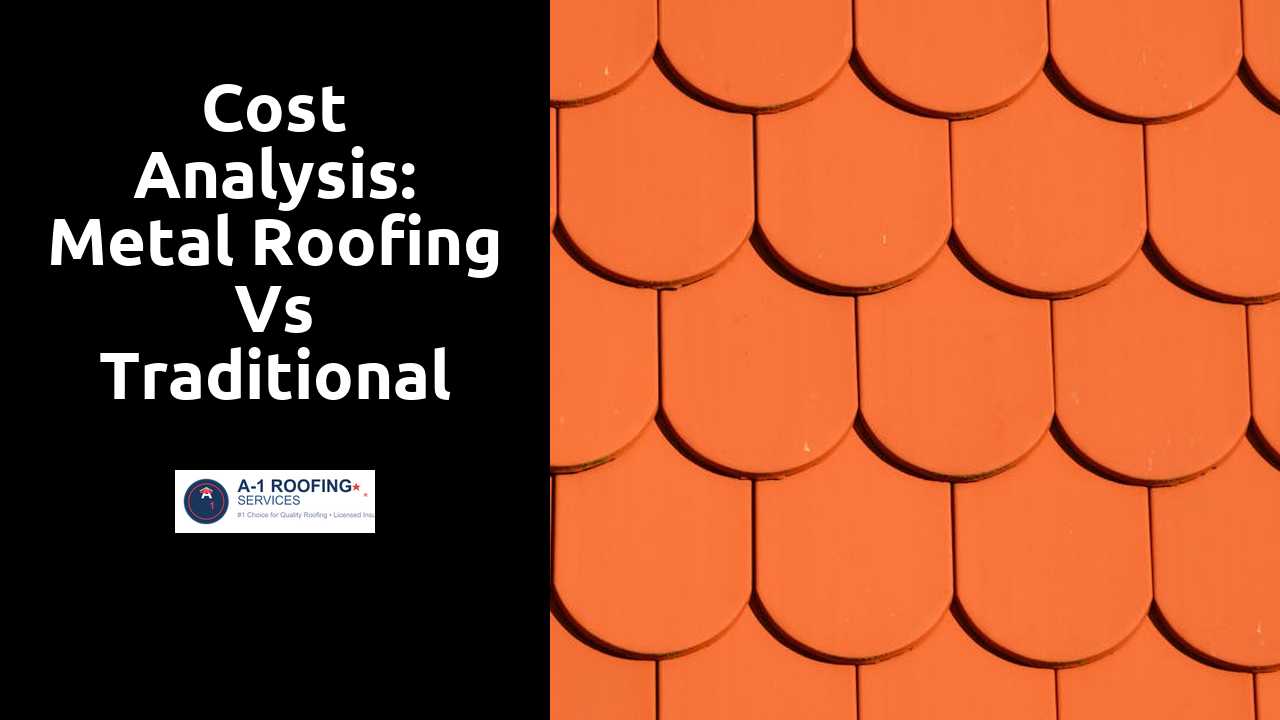
Cost Analysis: Metal Roofing vs Traditional Roofing Options
Table Of Contents
Energy Efficiency Comparison
Metal roofing is known for its exceptional energy efficiency. Its reflective properties help to deflect sunlight, reducing the amount of heat absorbed by a building. This reflects in lower cooling costs during warmer months, making it a compelling choice for those seeking to enhance energy savings. Furthermore, many metal roofs feature coatings designed to maximize reflectivity and thermal performance, contributing to an improved overall indoor climate.
In contrast, traditional roofing options such as asphalt shingles typically absorb a significant amount of heat. This heat retention can lead to higher temperatures inside homes, often resulting in increased reliance on air conditioning systems. While some advancements have been made with cool roofing technologies in asphalt products, they generally do not match the energy efficiency offered by metal roofs. Homeowners focusing on long-term savings and comfort will find that metal roofing provides a measurable edge in energy efficiency.
This new blog post covers this topic in more detail.
Impact on Utility Bills
Metal roofing tends to excel in energy efficiency, which can lead to significant savings on utility bills. Its reflective properties help in keeping homes cooler during hot months, ultimately reducing the reliance on air conditioning systems. Traditional roofing materials, by contrast, often retain heat, which can escalate energy usage in hotter climates. This difference in thermal performance makes metal roofing a cost-effective option over time, particularly in areas facing extreme weather conditions.
In addition to its initial cost, homeowners should also consider the long-term financial benefits of a metal roof. The lower energy consumption not only leads to reduced utility bills but can also qualify homeowners for tax credits in some regions. Traditional options may not provide the same level of savings, making the upfront investment in metal roofing an attractive consideration for budget-conscious homeowners seeking to minimize ongoing expenses.
Environmental Considerations
The sustainability of roofing materials has gained significant attention in recent years, particularly as homeowners seek environmentally friendly options. Metal roofing stands out due to its recyclability and the potential to utilize recycled materials in its production. Many metal roofs have a lifespan exceeding 50 years, which minimizes waste and the frequency of replacement. Traditional roofing materials, such as asphalt shingles, often lead to increased landfill contributions since they have relatively shorter life spans and are not as recyclable.
Additionally, using energy-efficient materials can reduce the overall carbon footprint of a home. Metal roofs reflect solar heat, which can lower energy consumption for cooling and reduce greenhouse gas emissions associated with electricity generation. In contrast, traditional roofing may absorb more heat, necessitating higher energy usage to maintain comfortable indoor temperatures. This distinction in heat management plays a crucial role in how eco-friendly a roofing option can be in the long run.
Sustainability of Roofing Materials
The sustainability of roofing materials plays a crucial role in determining their overall environmental impact. Metal roofing is often made from recycled materials and is itself fully recyclable at the end of its lifespan. This reduces the demand for new raw materials and minimizes waste. In contrast, traditional roofing options such as asphalt shingles have a shorter lifespan and contribute significantly to landfill waste upon disposal. The production processes for these materials can be resource-intensive, leading to higher environmental footprints.
Incorporating eco-friendly roofing options promotes sustainability within construction. Choosing roofing materials with longer lifespans, such as metal or clay tiles, reduces the frequency of replacements needed over time. This durability not only contributes to less frequent waste generation but also supports energy conservation in buildings. By opting for sustainable materials, homeowners can make a positive impact on the environment while potentially benefiting from long-term cost savings.
Aesthetic Appeal and Property Value
The visual impact of a roof can greatly influence a property's overall aesthetic appeal. Homeowners often seek materials that complement the architecture of their houses. Metal roofing, available in various styles and colors, can enhance a home's exterior and provide a modern look. Traditional roofing options, such as asphalt shingles, also offer a range of designs but may not possess the same durability or longevity as metal.
Property value can be significantly affected by the choice of roofing materials. A well-maintained metal roof can attract potential buyers who appreciate its longevity and minimal maintenance requirements. Conversely, traditional roofs may require more frequent replacements or repairs, which could be a deterrent for some buyers. Ultimately, the choice between metal and traditional roofing can reflect personal style while also serving as a strategic investment in a home's marketability.
Influence of Roofing Style on Curb Appeal
The choice of roofing style significantly impacts the overall curb appeal of a property. Metal roofing, with its sleek and modern look, can enhance the aesthetic value of contemporary homes. Traditional roofing options, such as asphalt shingles or wooden shakes, offer their own charm and character, often complementing historical or rustic architecture. The contrast or harmony between roof style and the rest of the house plays a vital role in how potential buyers perceive the property.
Homeowners looking to increase their property value might find that updated roofing styles are a worthwhile investment. A well-maintained metal roof, for example, not only adds a polished exterior but also suggests durability and longevity. On the other hand, classic roofing styles may appeal to buyers seeking a more timeless or nostalgic feel. Selecting the right roofing material and style is essential for maximizing both visual appeal and potential resale value.
Related Links
Fire Resistance Properties of Metal Roofing MaterialsAdvantages of Choosing Metal Roofing for Your Home